In an era where personal branding is crucial, the role of expert stylists for men has become increasingly vital.
Whether you’re climbing the corporate ladder, navigating the dating scene, or simply aiming to feel more confident in your skin, a personal stylist can be a game-changer.
In this comprehensive guide, we’ll explore what expert stylists for men are and how they can transform not just your wardrobe but potentially your entire life.
What is an Expert Stylist?
An expert stylist for men is a fashion professional who specialises in curating and creating stylish looks tailored to individual men.
Unlike general fashion stylists or retail salespeople, these experts focus exclusively on men’s fashion, understanding the nuances of masculine style, current trends, and timeless classics that work for various body types, lifestyles, and personalities.
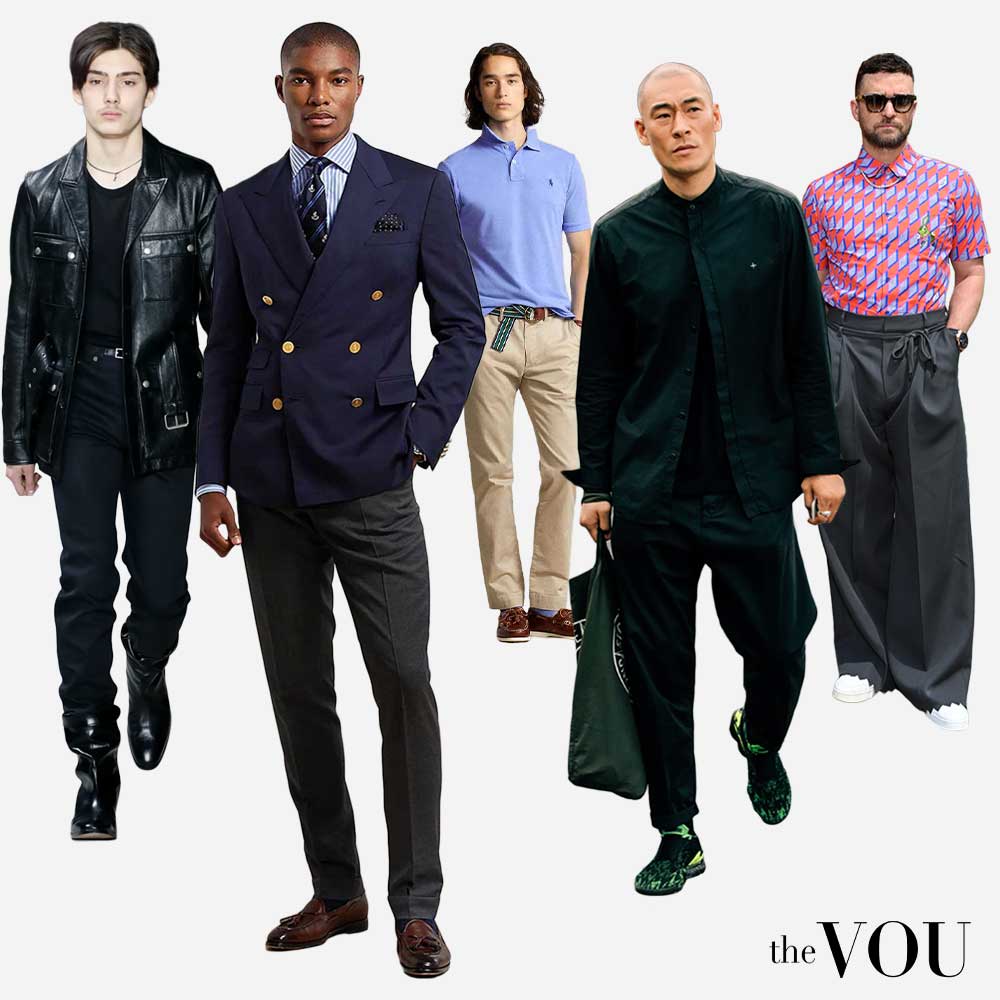
Personal Stylist vs Personal Shopper
While there’s some overlap, a personal stylist offers much more than a personal shopper:
Personal Stylist: Provides comprehensive style guidance, including wardrobe analysis, style education, and long-term style strategy, not limited to any specific brand or store.
Personal Shopper: Assists with purchasing clothes and accessories, often working within a specific store or brand.
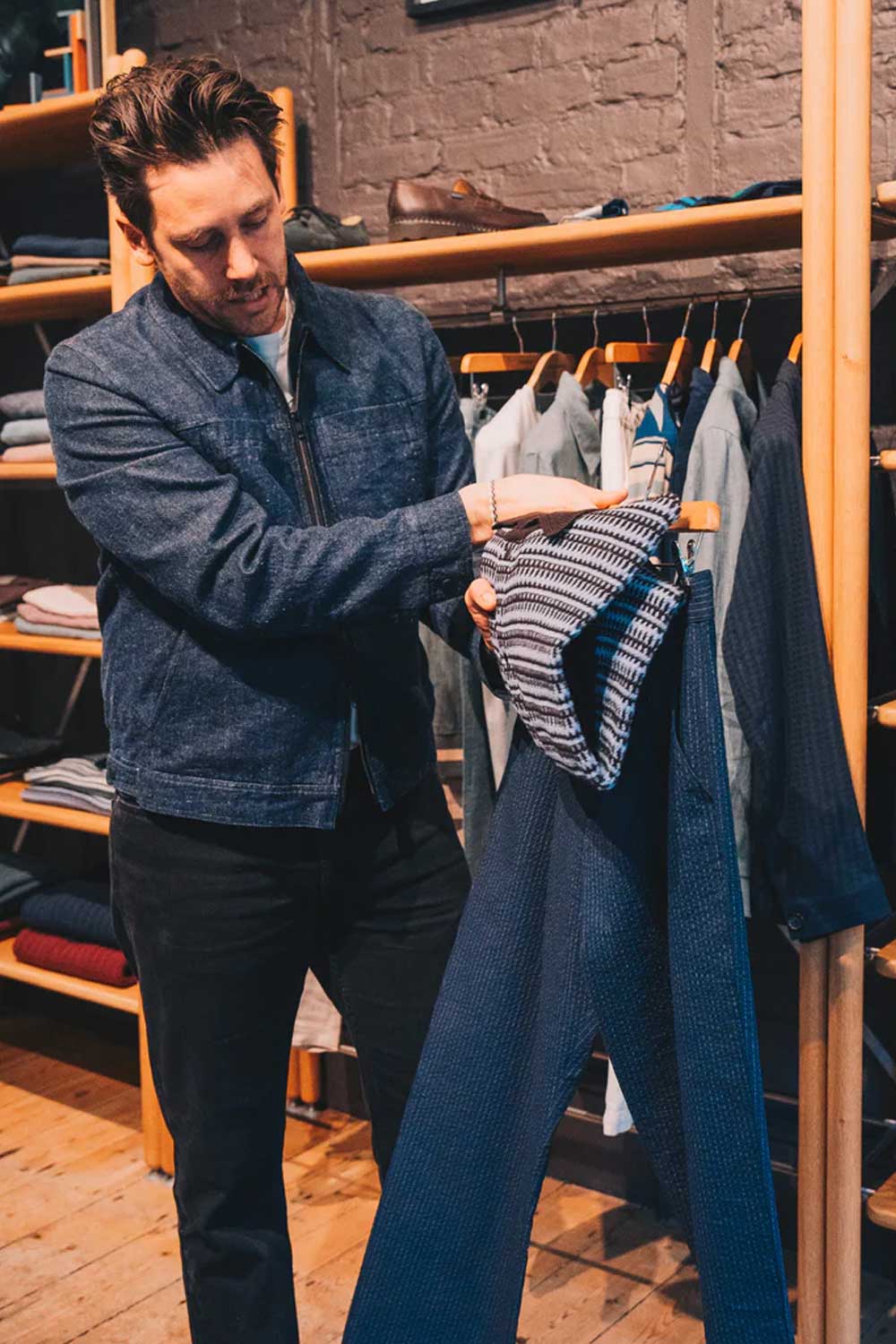
Expert Personal Stylist Roles
The contemporary expert stylist for men operates at the intersection of several disciplines, combining elements of fashion expertise, psychological insight, and personal branding strategy.
Their role can be deconstructed into several key components:
Sartorial Architect
At the most fundamental level, expert stylists function as sartorial architects, possessing deep knowledge of men’s fashion history, current trends, and future projections.
This includes expertise in:
Garment Construction and Fabric Science: Understanding the technical aspects of clothing, including fabric properties, construction techniques, and how these factors influence fit, durability, and overall aesthetic.
Colour Theory and Application: Utilising advanced colour theory to create harmonious and impactful colour combinations that complement the client’s skin tone, hair colour, and overall aesthetic goals.
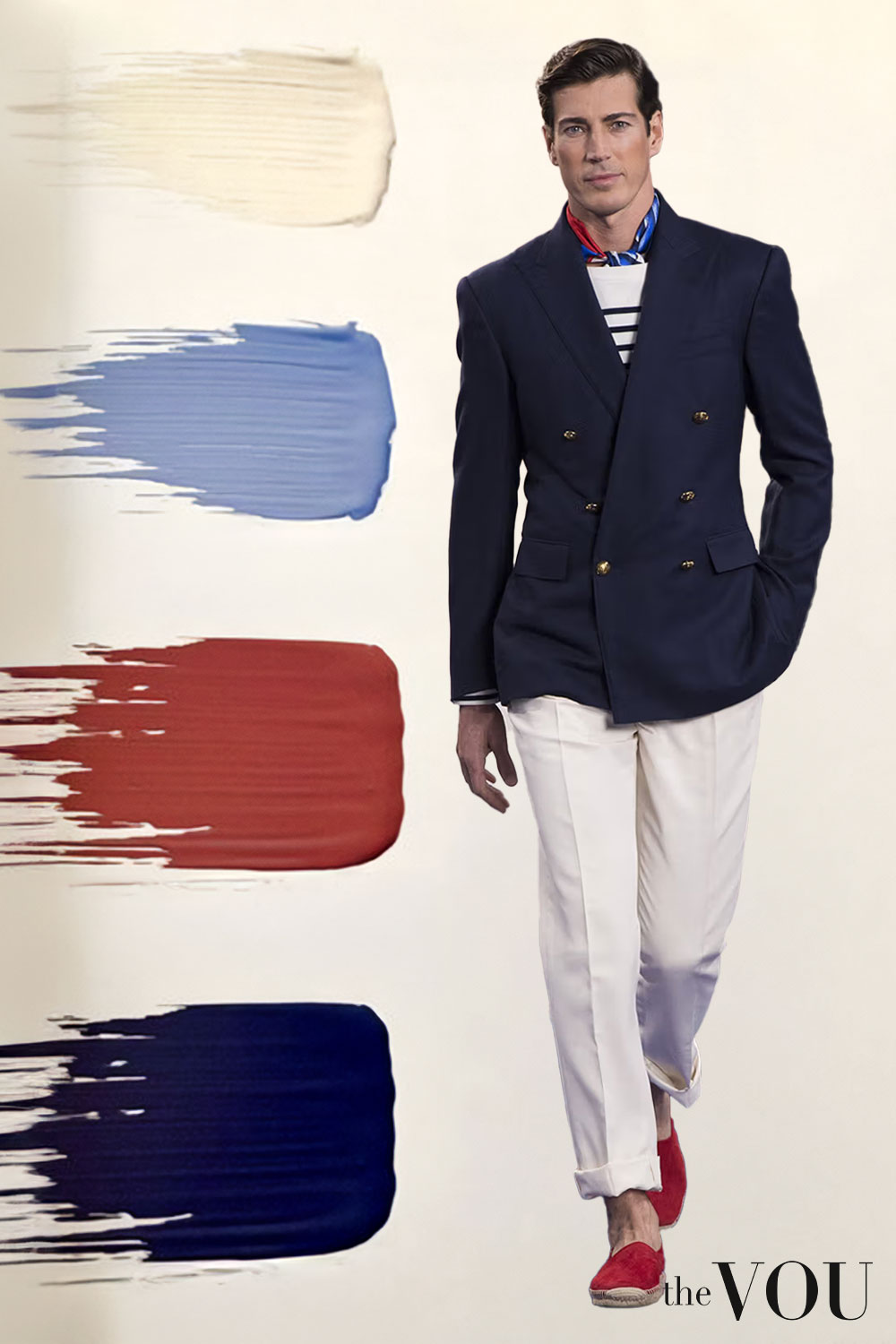
Proportional Analysis: Applying visual balance and proportion principles to create outfits that enhance the client’s physical attributes and minimise perceived flaws.
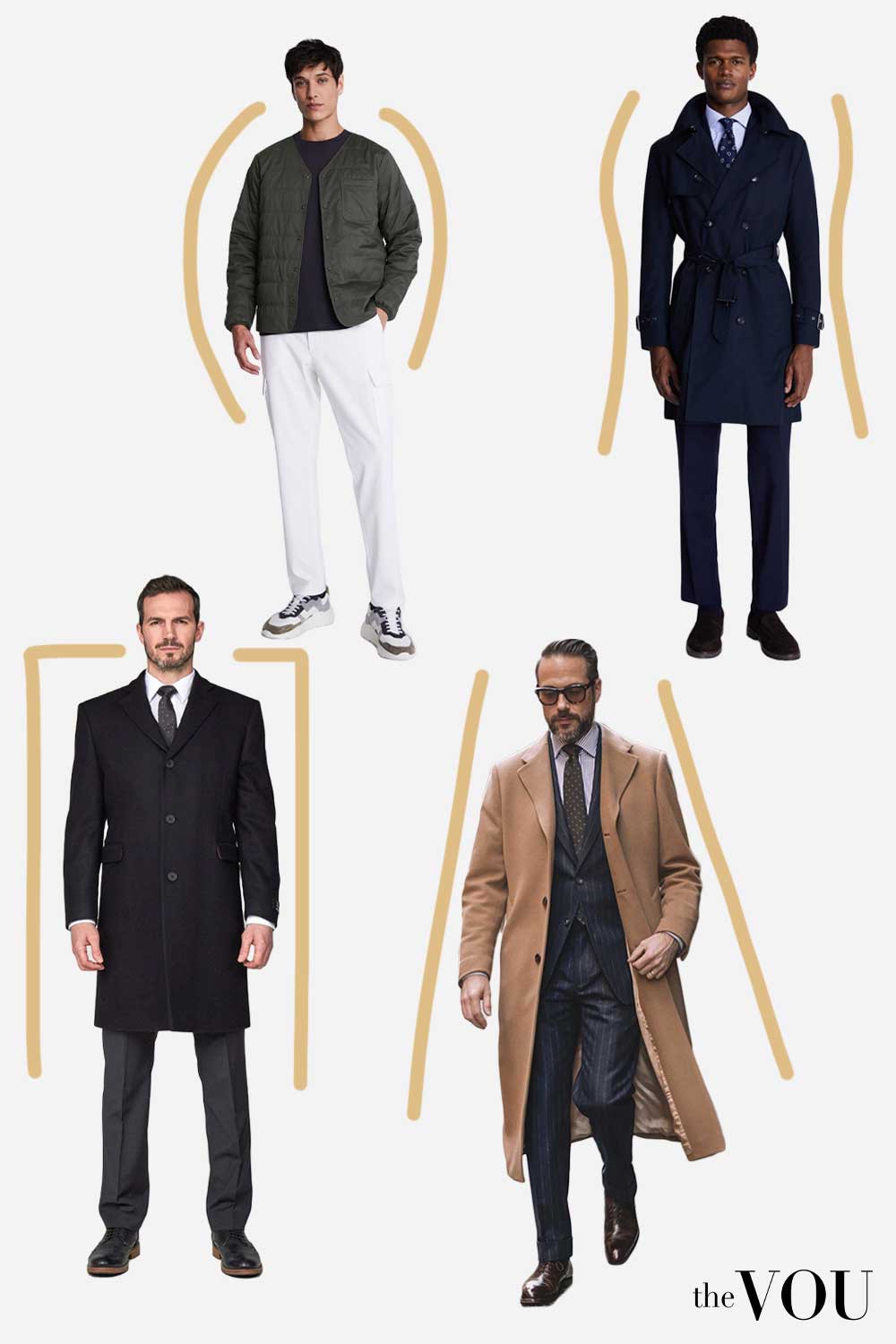
Identity Consultant
Beyond the technical aspects of clothing, expert stylists serve as identity consultants, helping clients articulate and project their desired personal brand and involves:
Psychographic Profiling: Conducting in-depth analyses of clients’ lifestyles, values, and aspirations to ensure that their styled appearance aligns with their internal self-concept.
Narrative Construction: Crafting a coherent visual narrative that communicates the client’s personal and professional identity across various contexts.
Cultural Interpreter: Navigating the complex interplay between individual style, societal norms, and cultural signifiers to create personally authentic and socially effective looks.
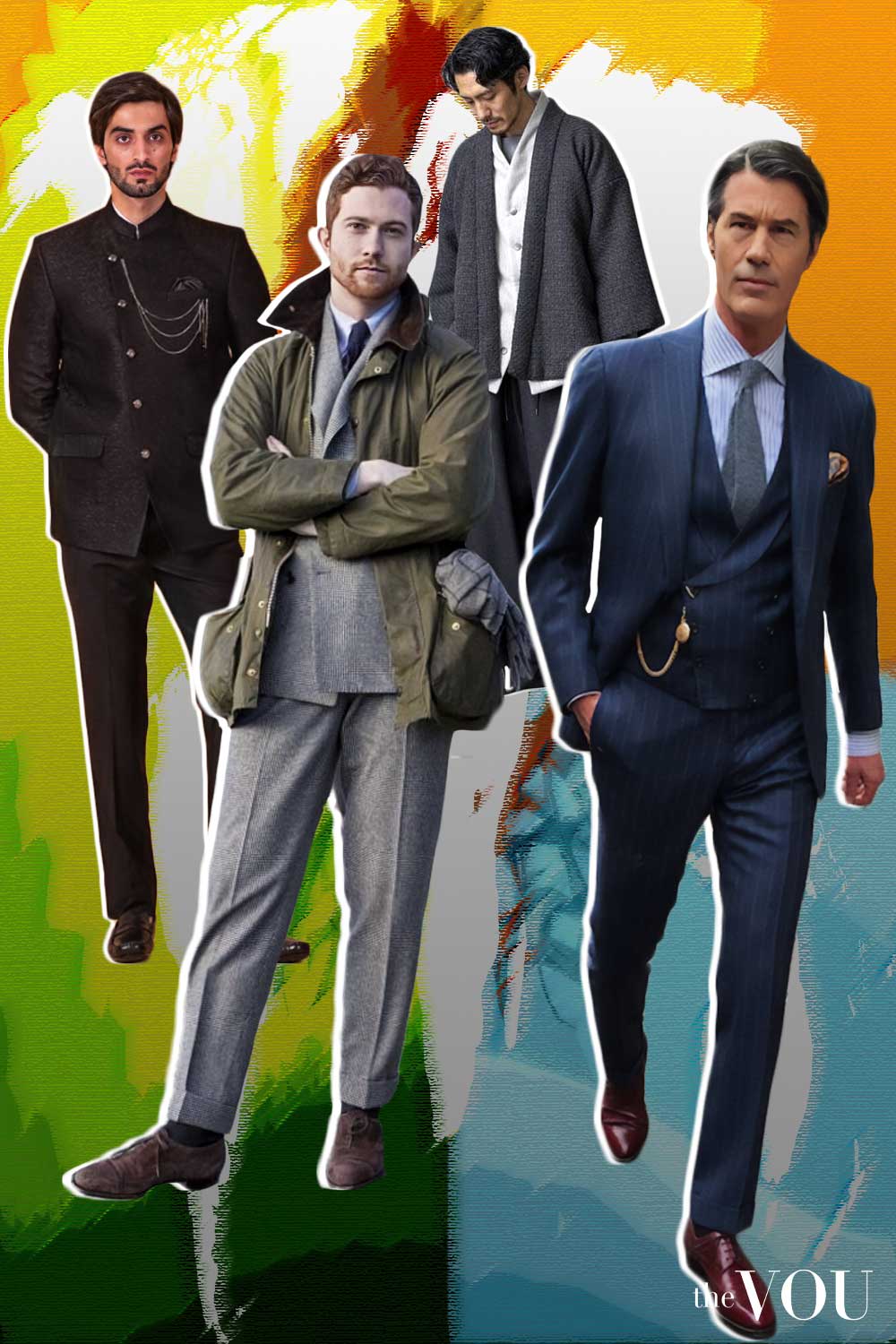
Strategic Image Curator
In an era where personal image can significantly impact professional opportunities and social dynamics, finding the right image consultant is more important than ever (and is worth it!).
Although there are minor differences between a stylist and an image consultant, personal stylists can also function as strategic image curators.
Here is what it includes:
Situational Analysis: Assessing the varied contexts in which the client operates and tailoring style recommendations to optimise impact in each scenario.
Trend Forecasting and Adaptation: Staying abreast of emerging fashion trends and selectively incorporating elements that align with the client’s long-term image goals.
Digital Presence Optimisation: Considering how the client’s styled appearance will translate across various digital platforms, ensuring consistency between in-person and online personas.
Holistic Wellness Advisor
Recognising the interconnectedness of appearance and overall well-being, many expert stylists expand their purview to include aspects of holistic wellness:
Grooming and Skincare Consultation: Providing guidance on grooming routines and skincare regimens that complement and enhance the overall styled appearance.
Posture and Body Language Coaching: Offering advice on physical comportment to ensure that the client’s non-verbal communication aligns with their styled image.
Lifestyle Congruence: Ensuring that style recommendations are congruent with the client’s lifestyle, including considerations of comfort, practicality, and personal values.
Modern personal stylists offer a holistic approach to style, going beyond just clothing choices and covering the client’s “total look”, which includes:
1. Fashion Styling
The core service includes wardrobe curation, outfit creation, and shopping assistance for clothing and accessories.
- Assess your current wardrobe
- Identify key pieces missing from your wardrobe
- Create versatile outfit combinations
- Guide you in shopping for new items that complement your existing wardrobe
2. Hair Styling Consultation
Many personal stylists either have men’s hair styling expertise or work closely with professional barbers.
- Hairstyles that complement your face shape and personal style
- Hair care routines and products
- Coordination of hairstyles with your overall look and lifestyle
For example, a stylist might recommend a classic side-part for a corporate executive but suggest a textured crop for a creative professional.
3. Grooming and Skincare Guidance
Personal stylists can and will provide guidance on:
- Skincare routines tailored to your skin type and concerns
- Proper grooming techniques for facial hair, including beard shaping and maintenance
- Selection of grooming products that align with your personal style and needs
They might, for instance, recommend a minimalist skincare routine for a busy entrepreneur or a more comprehensive regimen for a man concerned about ageing skin.
4. Nail Care Advice
While often overlooked, nail care is an important aspect of a polished appearance.
- Proper nail hygiene and maintenance
- Appropriate nail lengths for different professions and styles
- Use of professional manicure services when needed
5. Makeup for Men (When Applicable)
As men’s makeup becomes more mainstream, some stylists offer advice on:
- Subtle makeup techniques for enhancing features or covering blemishes
- Selection of appropriate makeup products for men
- Application techniques for a natural, polished look
This might include recommending a tinted moisturiser for an evening out skin tone or a clear brow gel for a groomed look.
6. Fragrance Selection
A personal stylist may also guide clients in choosing signature scents that complement their overall style and personality. They consider factors like:
- Your body chemistry
- The occasions you’ll be wearing the fragrance
- How the scent aligns with your personal brand
Why Seek Help from Personal Stylists
Understanding why men seek personal stylists can help you determine if their services align with your needs:
Career Advancement: Many men realise that appearance is crucial in professional settings. A polished look can boost credibility and open doors to new opportunities.
Life Transitions: Major life changes, such as divorce, career shifts, or entering the dating scene, often prompt men to seek styling help.
Confidence Building: A well-curated style can significantly boost self-esteem and overall confidence.
Time Savings: Busy professionals often find that personal stylists save time and reduce the stress of shopping and outfit planning.
Style Education: Many men want to learn to make better style choices independently and consider working with a stylist an educational investment.
Body Changes: Weight loss, gain, or other physical changes might necessitate a wardrobe overhaul and style reassessment.
Brand Building: Entrepreneurs and public figures often work with stylists to create a cohesive personal brand that aligns with their professional image.
Expert Stylists Main Services
Expert stylists offer services tailored to meet different needs and budgets, and in this section, we’ll explore these services in detail.
Style Consultation
This initial service involves a comprehensive discussion about the client’s style goals, lifestyle, and preferences.
The stylist assesses the client’s current wardrobe and style, identifies areas for improvement, and creates a personalised style plan that includes:
- Body shape analysis to determine the most flattering cuts and styles
- Colour analysis to identify the most complementary colour palette
- Lifestyle assessment to ensure style recommendations align with daily needs
- Discussion of style icons and preferences to understand the client’s aesthetic goals
Wardrobe Audit
In the wardrobe audit service, the stylist reviews the client’s wardrobe, identifying pieces to keep, alter, or discard.
- Assessing the condition and fit of each garment
- Identifying gaps in the wardrobe
- Creating a list of essential items needed to complete the wardrobe
- Demonstrating new ways to combine existing pieces
- Advising on alterations to improve fit or update older pieces
Personal Shopping
Stylists accompany clients on shopping trips or shop on their behalf, selecting pieces that align with the established style plan.
- Pre-selection of items to streamline the shopping process
- Guidance on fit, quality, and versatility of clothing items
- Introduction to new brands or styles the client might not have considered
- Advice on investment pieces versus trend items
- Assistance with alterations to ensure a perfect fit
Outfit Creation
The stylist creates outfits suitable for different occasions using items from the client’s wardrobe (both existing and newly purchased).
- Photographing outfits for easy reference
- Creating a digital lookbook or style guide
- Lessons on mixing and matching to maximise wardrobe versatility
- Advice on accessorising to elevate each look
Virtual Styling
Many stylists now offer virtual services, remotely providing style advice, wardrobe recommendations, and shopping suggestions through video calls and digital platforms.
- Virtual wardrobe audits using photos or video
- Digital mood boards and style guides
- Online shopping sessions with screen sharing
- Video tutorials on styling techniques
Seasonal Wardrobe Updates
This ongoing service involves updating the client’s wardrobe each season, incorporating new trends, and ensuring it remains current and functional.
- Review of upcoming fashion trends
- Suggestions for incorporating seasonal items into the existing wardrobe
- Advice on storing off-season clothing
- Updates to the client’s style guide to reflect seasonal changes
How to Choose the Right Stylist for You
Selecting the right personal stylist is crucial for achieving your style goals, and here are some factors to consider:
Expertise and Specialisation
Look for a stylist who specialises in men’s fashion and has experience working with clients similar to your age, profession, and style goals. Some stylists may have particular expertise in areas like:
- Business and professional wear
- Casual and streetwear styles
- Formal and black-tie attire
- Styling for specific body types
Portfolio and Style
Review the stylist’s portfolio or Instagram feed to understand their aesthetic. Ensure their style aligns with your goals and preferences.
Look for versatility in their work, demonstrating an ability to adapt to different client needs.
Consultation Process
A good stylist should offer an initial consultation, often complimentary, to discuss your needs and their services and you should use this opportunity to assess:
- How well the stylist listens to your concerns and goals
- Their ability to explain their process clearly
- Whether you feel comfortable and confident in their presence
Services Offered
Ensure the stylist offers the specific services you need.
Some may focus solely on wardrobe styling, while others offer a more comprehensive service, including grooming and personal shopping.
Budget Compatibility
Discuss fees upfront and ensure they align with your budget.
Remember that while personal styling is an investment, a good stylist should be able to work within various budget ranges.
Continued Support
Inquire about follow-up services and ongoing support.
A valuable stylist-client relationship often extends beyond the initial consultation and shopping trips.
By carefully considering these factors, you can find an expert stylist who will enhance your appearance, boost your confidence, and help you present your best self to the world.
The Process of Working with a Personal Stylist
When you engage an expert stylist, you embark on a transformative journey.
This process is designed to be thorough, personalised, and ultimately rewarding. Let’s explore each step in detail:
Initial Consultation
Your journey begins with a comprehensive discussion about your style goals, lifestyle, budget, and any specific concerns or preferences you may have.
This isn’t a quick chat; it’s an in-depth exploration of your needs.
Your stylist will ask probing questions about your daily routine, work environment, social activities, and personal aspirations.
They’ll also inquire about any style icons you admire or looks you’ve always wanted to try but perhaps lacked the confidence to pursue.
This consultation sets the foundation for your entire styling experience, allowing the stylist to understand what you wear, why you wear it, and how you want to be perceived.
Recap:
- Detailed questionnaires to gauge style preferences, lifestyle needs, and aspirational goals
- Psychometric tests to understand personality traits that may influence style choices
- Visual exercises, such as mood boarding, to capture abstract style concepts
Style and Body Type Analysis
Following the initial discussion, your stylist will thoroughly analyze your body type and current style.
This involves precise measurements and examining your physique to determine which cuts and styles will flatter you most.
They’ll consider factors such as your shoulder width, chest-to-waist ratio, leg length, and overall proportions.
Additionally, they’ll assess your skin tone, hair colour, and facial features to determine your most flattering colour palette.
This analysis goes beyond mere aesthetics; it’s about creating harmony between your physical attributes and clothing choices to enhance your natural features and boost your confidence.
Recap:
- Precise body measurements to determine optimal garment proportions
- Facial structure analysis to inform recommendations on hairstyles, beard grooming, and eyewear
- Skin tone and undertone assessment for personalised colour palette development
Wardrobe Audit
The wardrobe audit is a crucial step in the styling process. Your stylist will meticulously review your existing wardrobe.
This isn’t about discarding everything you own; it’s about understanding your current style, identifying pieces that work well, and recognising areas for improvement.
The stylist will examine each item, considering its fit, condition, and relevance to your lifestyle and style goals.
They’ll identify key pieces to keep, items that need alterations, and gaps in your wardrobe that need to be filled.
This process helps create a clear picture of what you have and what you need, laying the groundwork for a more cohesive and versatile wardrobe.
Recap:
- Cataloguing and categorising existing garments
- Identifying key pieces, redundancies, and gaps in the wardrobe
- Analysing the functional and symbolic value of current clothing items
Style Plan Creation
Your stylist will create a personalised style plan based on the insights from the consultation, analysis, and wardrobe audit.
This comprehensive document is your style roadmap, detailing recommended pieces, colour palettes, and outfit ideas tailored to you.
The plan will include suggestions for key wardrobe investments, guidance on combining items for maximum versatility, and advice on adapting your style for different occasions.
It’s not just about following trends; it’s about creating a timeless, personal style authentically representing you.
Recap:
- A personalised colour palette and texture guide
- Recommended silhouettes and garment styles
- Accessorising strategies
- Grooming and skincare recommendations
- Occasion-specific outfit formulas
Shopping and Wardrobe Building
With your style plan in hand, the exciting process of acquiring new pieces begins. This phase involves strategic shopping trips or the stylist’s independent shopping on your behalf.
Your stylist will focus on selecting items that fill the gaps in your wardrobe, complement your existing pieces, and align with your newly defined style.
They’ll consider factors like quality, versatility, and budget to ensure each purchase is worthwhile.
During this phase, you’ll learn valuable skills for assessing fit, quality, and value, which will empower you to make better shopping decisions in the future.
Recap:
- Sourcing and acquiring new garments and accessories
- Altering existing pieces to better align with the new style direction
- Organising the wardrobe for optimal functionality and visual appeal
Outfit Creation and Styling Sessions
Once you have acquired new items, your stylist will help you create a variety of outfits.
These styling sessions are both practical and educational. You’ll learn how to combine pieces in unexpected ways, maximising your wardrobe’s versatility.
The stylist will demonstrate how to dress for different occasions, from casual weekends to formal events, ensuring you feel confident in any situation.
They’ll also teach you styling tricks, such as using accessories to elevate a look or transition an outfit from day to night.
Recap:
- Principles of Outfit Composition
- Garment care and maintenance
- Adapting style to various contexts
- Ongoing trend interpretation and incorporation
Follow-up and Refinement
The relationship with your stylist doesn’t end after the initial process. Follow-up sessions are essential to ensure your new style works well in your daily life.
These sessions allow for any necessary adjustments and provide an opportunity to address any challenges you’ve encountered.
Your stylist will review how you’ve been implementing your new style, offer additional advice, and potentially suggest seasonal updates or refinements to your wardrobe.
This ongoing support ensures that your style evolves with you, adapting to changes in your life, career, or personal preferences.
Throughout this process, your stylist is a guide, educator, and confidence-booster.
Recap:
- Regular review sessions to assess the effectiveness of the style plan
- Adjustments based on changing life circumstances or style goals
- Incorporation of new fashion elements to keep the style current and dynamic
Conclusion
While rooted in the practical aspects of clothing and appearance, the role of the expert stylist has grown to encompass a complex interplay of psychology, sociology, and personal branding.
As personal image continues to play a crucial role in both professional and personal spheres, the expertise provided by these professionals is likely to remain in high demand, adapting and evolving to meet the changing needs of men in an increasingly image-conscious world.
Style Like a True Gentleman
Before we say goodbye, here’s one of the best-kept secrets in men’s styling circles, a secret that only a few expert image consultants know or are willing to share.
First and foremost, professional styling requires knowing your unique body shape and seasonal colour palette – paramount factors in choosing perfectly fitting clothes in colours that complement your skin, eyes, and hair.
Only then can a stylist engage in styling by occasion, location, season, and time of day, with garments, footwear, and accessories from stylistically relevant, heritage fashion brands to depict high confidence and success.
Best part? You can find your body shape, seasonal colour palette, and ideal fashion style, in less than 5 minutes, by yourself, for free, thanks to our 4 simple steps:
1. Find Your Body Shape
Different garments flatter different silhouettes, so knowing your body shape is the first step in dressing like a confident man.
To find out your unique body shape, take our free body shape quiz for men.
Once you know your unique body shape, take the second free quiz to discover your unique colour palette.
2. Find Your Unique Colour Palette
Remember, the garments that compose your outfits come in various colours and you have to make sure that each hue complements your natural colour.
For that, you have to find out your seasonal colour palette, and you can do it by taking our free seasonal colour quiz for men.
3. Find Your Ideal Fashion Style
By now, you should already know your body shape and unique colour palette; the next step is to discover your ideal personal fashion style.
The fastest and simplest way is to take our free fashion style quiz for men; it includes your ideal style, outfit ideas, relevant fashion brands, and much more.
4. Professional Image Consultancy with The VOU
And if you want to style like a professional, by occasion, location, season, and time of the day, you can always ask our expert image consultants and fashion stylists for help.
Our styling services for men are the most comprehensive and detailed on the market, backed up by leading stylists who will guide you step by step in creating looks that communicate affluence, elegance, and endless accomplishments.
Remember, wearing luxury brands isn’t enough; to look stylish, confident, and successful, you must first know your body shape, colour palette, and ideal personal style, and only then style by occasion, location, season, and time of day.
Contact us today to save headaches, time, and money – it’s time to dress like a confident, successful gentleman of exquisite fashion taste – the first styling assessment is on us!
With over twenty years of front-row fashion and styling events, collabs with haute-couture houses, and a PhD in Luxury Fashion, Laurenti is an expert in crafting personalised looks that depict old-money sophistication.
With years of expertise in high-end fashion collabs and a PhD in Sustainable Fashion, Ru specialises in eco-luxe wardrobes for the modern gentleman seeking understated refinement.


